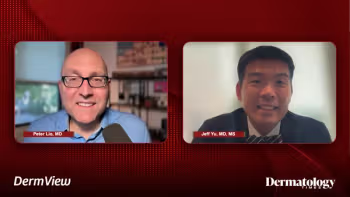
Editorial: Solving the case of the unfilled prescription
Dermatologists are frustrated because they know there will be many more cases of the unfilled prescription. And what can we do?
We enter the dimly lit office of Sherlock Holmes with he and Dr. Watson engaged in a vigorous debate. Holmes is mixing aliquots of two chemicals and watching the precipitate collect in the bottom of the beaker while Watson is coughing at the window complaining of the malodorous scent filling the room. Holmes chides Watson for being childishly weak natured in light of the tremendous discovery he has made.
“What good is a product that smells and tastes so frightfully awful?” inquires Watson, not knowing that Holmes has discovered a new drug for the treatment of acne. Holmes jubilantly dances around the room, proclaiming he has alleviated adolescent suffering and restored dignity to mature women noting that dermatologists will now be able to write a prescription for his concoction.
Watson is not impressed. He says, “Holmes, dermatologists will write prescriptions for your drug, but the prescriptions will not be filled!” Holmes picks up his pipe, takes a few puffs, blows smoke in Watson’s face and says, “We must solve the case of the unfilled prescription.”
Looking at clues
It is now up to us to solve the case and determine why Holmes’ prescription for this breakthrough acne drug has not been filled. Many clues exist for consideration. First, a thorough review of newly written insurance policies specifies that acne is not a covered diagnosis, thus acne medications must be purchased outside the prescription plan. Second, a trip to the pharmacy confirms that the medication is priced at $350 a tube and while Holmes’ drug appears promising, there is no guarantee it will meet patient expectations.
Third, while an insurance plan has been located that the patient might wish to purchase with acne coverage, acne drugs require step therapy and the patient must use and fail two other medications before Holmes’ drug can be obtained via prior authorization. This means the patient would need to pay for two additional office visits and purchase two additional prescriptions before access to Holmes’ drug might be granted. Of course, there is no guarantee that prior authorization would be obtained after completing these requirements.
We announce to both Holmes and Watson that the case has been solved! The prescription went unfilled for several reasons with the common underlying theme of money. It appears that the patient spent all of their available funds on monthly insurance premiums of $250. The premiums are less than many comparable plans because the coverage is offered through the university group plan, but the deductible is $2,500 annually.
It is early in the plan year and the patient has had no other medical needs, so he used his last $75 this month to pay for his office visit co-pay, realizing that he will need to also pay for the remainder of the charges when the insurance company puts the visit toward his deductible. Now he realizes he has no money left to pay for the prescription out-of-pocket.
Solving the problem
While the case of the unfilled prescription has been solved, we still have not solved the problem for the patient who has received no improvement in his acne despite paying more than $350 this month. What should the patient do?
Since it is unlikely that the student will have any extra money next month, there is only one logical solution. He should cancel his insurance policy for one month and use the $350 to pay for his prescription. Once the medication has been purchased, he should then reinstate his insurance policy hoping that he does not get in a car accident and require medical care during the one-month lapse.
Neither Holmes nor Watson are impressed with our solution. Paying $350 a month to receive no care for one of the most common conditions affecting young adults is “poppycock,” declares Watson. Holmes wonders why he even wasted his time developing this novel highly efficacious acne medication.
Dermatologists are frustrated because they know there will be many more cases of the unfilled prescription.
Newsletter
Like what you’re reading? Subscribe to Dermatology Times for weekly updates on therapies, innovations, and real-world practice tips.


















